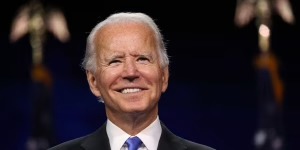Chinese New Year? More Like Lunar New Year
Lunar New Year was widely celebrated on February 1st, 2022.
March 8, 2022
Chinese New Year (Chūn Jié). A celebration of the new year in the lunar calendar. Dancing lions, delicious foods, and deep cleaning. Twelve zodiac animals and their individual meanings and superstitions. Family dinners and lucky money. It’s a time to celebrate with family and honor ancestors. There’s just one thing that doesn’t match up: not everyone celebrating is Chinese.
Lunar New Year is celebrated throughout many other Asian countries—Vietnam’s version is called Tết, while Korea claims Seollal festivals and Indonesia celebrates Imlek. The Philippines, Taiwan, Malaysia, and Singapore all host Lunar New Year celebrations as well, and some other Asian countries have very similar new year celebrations that occur at slightly different times. Tibet celebrates Losar, Thailand celebrates Songkran, Laos observes Pi Mai and Mongolia observes Tsagaan Sar. Even countries outside of Asia have celebrations, such as the United States.
While some of these celebrations have similar traditions, including family dinners, dances, red packets, and honoring ancestors, there are still many differences. The length of the celebration varies, with some observing the holiday for three days, five days, or 15 days. There are also variations in the animals of the zodiacs. Each culture is unique, and even celebrations with- in the same culture can be different. These diverse celebrations can not be placed under one ethnicity. The United States, and other Western countries, have a habit of stereotyping East and Southeast Asians as one and the same, overlooking their many unique cultural identities. During the Lunar New Year, this effectively underrepresents the traditions and celebration of major East and Southeast Asian countries.
The misrepresentation of this holiday trickles down into the harmful impacts of grouping all Asians together. The common stereotype that all Asians are Chinese creates issues from “ni-hao” catcalls in the street to treating Asia as its own entity rather than an amalgamation of multiple. The erasure of the diverse group of cultures within the continent not only diminishes the role of each country on the international stage, but also devalues Asian individuals themselves. This culture of putting everyone who happens to look a certain way under one big umbrella (Asian, Native Hawaiian and Pacific Islander) impedes recognition of the struggles faced by each demographic. These “catch- all” terms, made for statistical purposes, add to a mindset of “you all look the same, so you all have interchangeable experiences.” This makes an Asian individual’s voice even smaller in a group that is already often disregarded.
Despite being the most populous continent and making up the majority of the world’s population, due to the small percentage of Asians in North America, this group of around 4.7 billion people falls under one term. The “Chinese New Year” label is just a further indicator of the Western eye perceiving all Asians as the same. Educate yourself and others on the celebration—and start using the term Lunar New Year.
This piece also appears in our February 2022 print edition.











